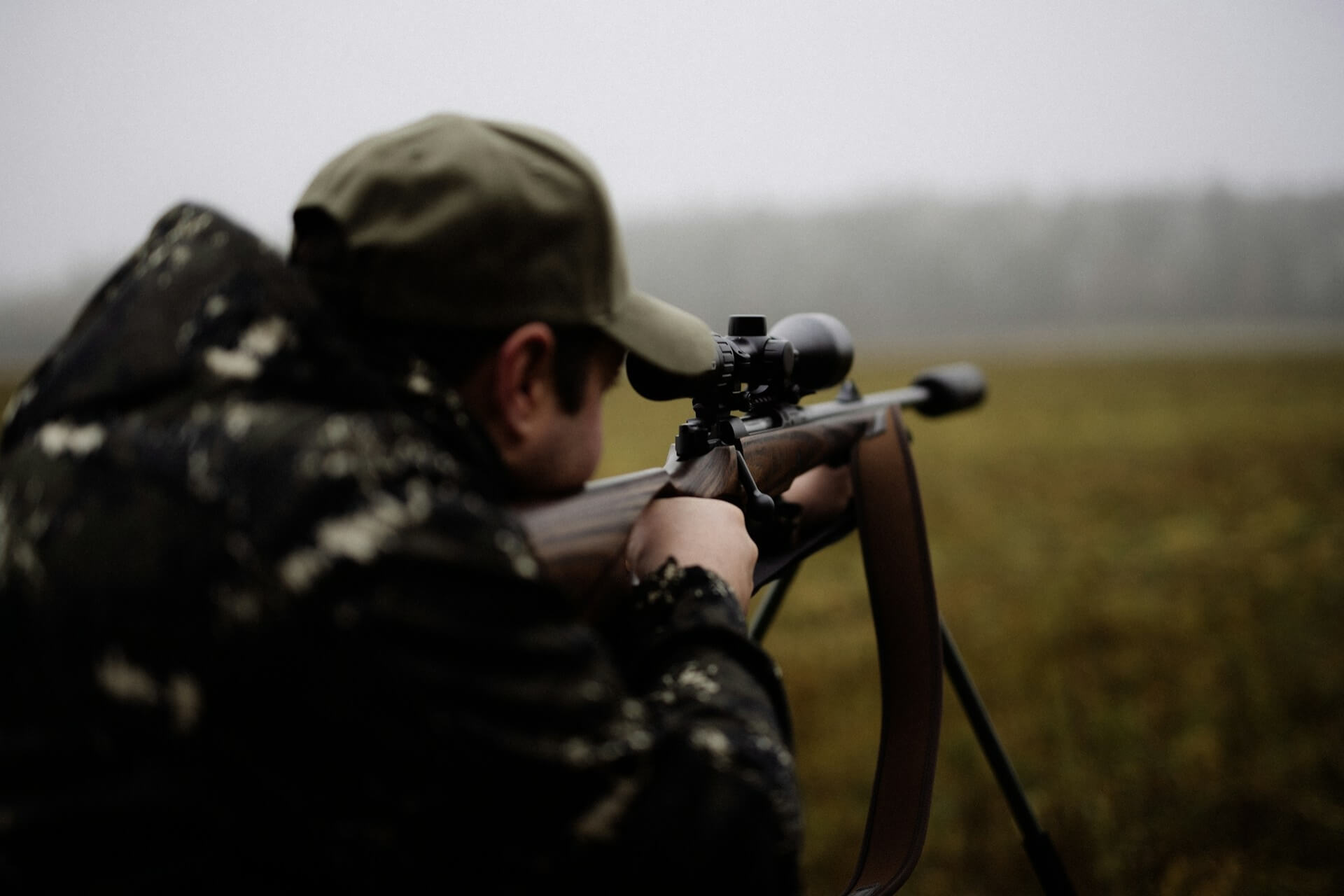From the early muzzleloaders used by settlers to the sophisticated rifles of today, hunting firearms have undergone significant transformations throughout American history. With regulations varying widely among states and often tailored to specific game types and conservation goals, knowing which firearms are permissible is a surefire way to stay within the law and ensure a successful hunt. You should always know the difference between illegal firearms and legal ones.
Legal Firearms You Can Use for Hunting
The type of firearm you can use depends on the game you target. Firearm manufacturers classify them based on their action, caliber and purpose. Here are the most commonly used options.
1. Muzzleloaders
Muzzleloaders offer a historical, hands-on approach to hunting for those seeking a more traditional experience. Most states restrict their use to designated seasons, often before or after modern firearm seasons in the secondary rut.
A muzzleloader’s effective range is typically 100 yards, making it ideal for hunters who enjoy stalking prey closely. They require careful loading of powder or projectiles such as patches, balls or modern equivalents like pre-measured pellets and sabots. They are best for hunters who value patience and precision.
2. Handguns
Hunting with a handgun is an art, requiring a steady hand and proximity to the target. Revolvers chambered in calibers such as .44 Magnum or .357 Magnum are popular due to their power and reliability.
Some states permit handgun hunting for certain species if the firearm meets minimum specifications. For hunters interested in using handguns, practice is essential to ensure accuracy and ethical kills, especially since the effective range of handguns is much shorter than rifles or shotguns.
3. Shotguns
Shotguns excel in small-distance scenarios, such as hunting ducks in wetlands or flushing pheasants and furbearers from tall grass. They are also good performers for turkey hunting, where their wide spread increases the chance of hitting the target.
Gauge size is crucial with these firearms — 12-gauge and 20-gauge shotguns are most popular due to their versatility. The pump-action 20-gauge shotgun offers the best blend of reliability and affordability, making it one of the best for beginner hunters.
Hunters must also adhere to regulations regarding nontoxic shots, such as steel or bismuth, to protect waterfowl and prevent lead contamination in ecosystems. However, some states, like Pennsylvania, limit shotgun usage to specific hunting zones, particularly in urban or densely populated areas.
4. Air Guns
Advances in air gun technology have expanded their role in hunting. Much like Anton Chigurh’s bolt gun in “No Country for Old Men,” modern air rifles capable of shooting .30 caliber or larger projectiles can humanely take down large animals such as coyotes and wild hogs.
The quiet operation of classic picks like the Quackenbush big bores makes them a stealthy choice, especially in areas where noise restrictions apply. They also feature low-cost, widely available ammunition.
5. Rifles
Hunters prefer rifles for their precision and power. They are particularly effective for big-game species like deer, elk, moose and some big birds like turkeys. In fact, as much as 33% of the fall turkey harvest can be attributed to a non-automatic rifle kill. However, states like Pennsylvania have temporarily banned this to promote hen populations statewide.
These are three of the best calibers for dropping deer. Each delivers the accuracy and stopping power required for humane kills.
- .270 Winchester
- .30-06 Springfield
- .308 Winchester
When selecting a rifle, consider the terrain and distance at which you’ll be hunting. For open plains, a high-velocity, long-range caliber is ideal, whereas wooded areas may call for a shorter-range, heavier bullet. States often regulate the minimum caliber or energy requirements to ensure ethical hunting practices.

Illegal Firearms for Hunting
Not all firearms are suitable — or legal — for hunting. Specific categories are explicitly off-limits to maintain safety and preserve wildlife populations.
1. Fully Automatic Weapons
Fully automatic weapons are universally illegal for hunting due to their inability to deliver precise, controlled shots. A single pull of the trigger releases a continuous stream of bullets, which increases the likelihood of overkill, wasted meat or wounding non-target animals.
Federal law highly regulates these firearms. Hunting with them does not align with ethical standards or safety concerns.
2. Suppressed Firearms
Suppressors, or silencers, are legal in some states for hunting, but the rules vary widely. For instance, some regions permit suppressor use for specific hunting but may require hunters to obtain authorization before use. However, Connecticut and Vermont will not bend even for hunters.
Suppressors reduce the sound of gunfire, minimizing stress to nearby wildlife and improving communication among hunting parties. However, opponents argue they could encourage irresponsible behavior, so they remain restricted in many jurisdictions.
Be Ethical With Your Firearm Selection
Hunting is simultaneously about equipment and ethics. It starts with choosing a firearm that’s suitable for your target species. Though hunting laws are complex and vary widely across the United States, staying informed enables you to respect the law and the wildlife you pursue.
The post Hunting Weapons: Which Are Illegal Firearms versus Legal Ones? appeared first on AllOutdoor.com.


